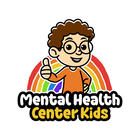|
Key Takeaways:
- Emotional regulation enables children to respond to difficult situations calmly and cope positively.
- Children with good emotional regulation skills have better focus, develop a strong emotional vocabulary, and are more empathetic.
- Some helpful emotional regulation activities you can try include yoga poses, calm-down dancing, emotions charades, and guided imagery.
|
Children’s minds are full of potential but in need of constant nurturing. Emotional regulation activities for kids are essential for families helping their children manage big feelings like anger and sadness. If you’re often frustrated when your child melts down or throws a tantrum, this article is here to help.
You’ll learn about why emotional regulation activities work, how they can support your child’s developing brain, and what activities you can try.
What is Emotional Regulation?
Emotional regulation is the ability to manage emotions in appropriate behaviors. Children who emotionally regulate can recognize their feelings and respond in a healthy, level-headed manner [*].
How emotionally regulated a child is depends on their maturity level. Younger children have underdeveloped prefrontal cortices, the brain’s control center for impulses and emotions. However, a child’s ability to self-regulate improves as they grow older and learn from the adults around them.
Why Emotional Regulation Matters in Childhood
Children need to learn to regulate their emotions, as it can affect their ability to focus and learn. When children can cope with frustration, mistakes, and failure, they are likelier to bounce back from disappointment and more motivated to try again.
Emotional regulation also influences a child’s social development and how they maintain relationships [*]. Sharing, taking turns, and practicing empathy put children in a better position to nurture friendships.
These skills can also guarantee better mental well-being and life outcomes. Children who don’t practice healthy coping skills can quickly become emotionally frustrated when they experience stress and are more prone to engaging in risky behaviors for a “quick fix.” When children can bounce back from negative experiences, they’re more resilient, confident, and better-equipped to handle stress.
Core Skills Behind Emotional Regulation
Being emotionally regulated means mastering this core toolkit of skills:
-
Naming emotions: Naming their feelings equips children to recognize their feelings before reacting. By the time they are toddlers, children can differentiate between happiness, anger, sadness, and fear. Parents need to help them understand more specific feelings like disappointment and frustration as they grow.
-
Pausing and reflecting: Pausing and reflecting entails stopping momentarily when big emotions hit. When a child can pause and reflect, they avoid responding in ways they might regret. It also builds self-awareness and encourages children to become more thoughtful and reflective.
-
Choosing healthy responses: Healthy responses are safe and positive. They might include activities that help a child cope or solve problems when appropriate. Learning this skill turns impulsive behavior into intentional choices.
-
Developing emotional vocabulary: Children with strong emotional vocabulary understand nuanced feelings like nervousness, jealousy, pride, and embarrassment. They can accurately describe how they feel and how strongly they feel it. Strong emotional vocabulary makes children better communicators.
10 Emotional Regulation Activities for Kids
The best way to improve a child’s emotional regulation is to put it into practice. Here are ten emotional regulation activities for kids you can try at home or school.
1. Squeeze a stress ball
It may seem simple, but squeezing a stress ball can provide significant relief for a child who is feeling stressed or anxious. The squeezing helps them release tension in the body and provides an outlet for anger or frustration [*].
2. Calming glitter jar
Glitter jars (or mindfulness jars) are helpful calming tools children can use when overwhelmed. Making it is easy:
- Find a sturdy container like a mason jar and fill it halfway with water.
- Mix in ½ a cup of glitter glue and 1 to 2 tablespoons of fine or chunky glitter.
- Fill the rest of the jar with water, but leave some space on top to avoid spillage.
- Screw the lid on tightly and shake vigorously.
Your child can use their glitter jar for visual focus when they need a second to calm down and collect themselves.
3. Bubble breathing
Blowing bubbles is like an exercise in disguise, as parents can use it to help their children calm their nervous systems. Bubble breathing encourages slow, deep breathing and resets your child’s mind.
Performing bubble breathing is simple and doesn’t require physical bubbles. Have your child pretend their hand is a wand and they’re blowing imaginary bubbles. The goal is to get them to inhale deeply through the nose and out the mouth to help them self-soothe.
4. Guided imagery
Guided imagery, also known as visualization, encourages children to imagine a safe, happy place. For example, you might ask them to close their eyes and imagine the beach and its soft, calming waves.
This practice helps build cognitive flexibility, which allows children to shift their focus away from stress, reappraise difficult situations, and use multiple coping mechanisms.
Children can use guided imagery as part of a daily routine, such as before bedtime. They can use it to create a safe mental space when they need a break from strong emotions or to promote healthy sleep.
5. Drawing and coloring emotions
Is your child a visual learner? If so, drawing and coloring emotions can help them build emotional awareness in an abstract way. Let your child draw whatever they want—shapes, faces, places, or just colors. Then, discuss their drawing afterward.
Ask how the colors and shapes they used made them feel. For example, if your child is angry, they might use red or black and make lots of sharp, hard lines.
6. Feelings collage
Like drawing emotions, a feelings collage is a creative outlet for children to explore multiple emotions simultaneously. Use whatever you have—old magazines, photo prints, stickers, newspapers, and coloring materials.
Encourage children to deliberate about their feelings collage. For example, you might ask them to find faces representing the spectrum of emotions or use places they associate negatively and positively. Encouraging them to be abstract about it gives them a visual language and helps them face difficult emotions in a more palatable way.
7. Emotion charades
Emotional regulation requires the ability to understand how others feel. The entire family can participate in this activity and take turns acting out emotions. Through this game, children can build their social-emotional skills and increase their empathy.
It can also open up a discussion. You can ask your child what expressions they associate with sad, angry, and confused faces, among others.
8. Yoga poses
Simple yoga poses can help a child regulate and calm down. You can use easy poses like Child’s Pose and Butterfly Pose and gentle stretching to encourage your child to slow down, breathe, and listen to their bodies.
Because yoga requires balance and concentration, it can also improve your child’s impulse control. Some studies show it even reduces challenging behaviors in the classroom [*].
9. Acting out emotions
Acting out emotions is similar to emotions charades, only it focuses on practiced coping strategies. You and your child role-play scenarios that bring up big feelings. For example, you might role-play an argument between friends.
Throughout the activity, you’ll rehearse handling emotions and have your child practice what they can do to calm down and react positively.
10. Calm-down dance party
While it may sound counterintuitive, dancing while your child is upset can help them “dance out” their bad mood. Jumping, shaking, and spinning can expel negative energy and stimulate your child’s endorphins. Frame the activity as “dancing away worries” or “shaking off grumpy feelings.”
How to Use These Activities Effectively
Introducing emotional regulation activities for kids can be a game-changer when you implement them correctly and effectively. Here are some tips that can make a difference:
-
Create a routine: As the saying goes, practice makes perfect. Creating a routine allows your child to practice emotional regulation every day. For example, as a family, you can do a few yoga poses before bed or encourage them to “dance out” stress during study breaks.
-
Get involved and model healthy regulation: Children learn emotional regulation best through warm, proactive, and responsive parenting. Join them for activities while modeling your own regulation strategies out loud. For example, after a hard day at work, you might announce that a meditation session is in order.
-
Be patient and remain positive: Building emotional regulation skills requires patience and long-term learning. Your child isn’t going to be perfect at it, and you should give them room to make mistakes. Celebrate small victories, including slightly shorter tantrums or when your child self-soothes.
Printables to Support Emotional Regulation Activities
Visual aids and hands-on materials can help your child practice emotional regulation at home. Here are some worksheets and printables you can use:
-
Feelings check-in: Reflect on how your child is feeling and consider the thoughts they’re having. Use this worksheet to determine what coping skills are appropriate in the moment.
-
Calm-down visuals: Need a quick way to calm down? Our handout suggests 101 ways to relax, including yelling into a pillow, going for a walk, or cuddling with a stuffed animal.
-
Square breathing poster: Deep breathing can help children ground themselves when stressed. Equip them with our square breathing poster to calm them down.
Review more of our coping skills worksheets to find techniques that work for your child.
The Bottom Line
Children don’t always know how to handle big emotions. They might cry, withdraw, or act out. But with the right emotional regulation activities, your child can become more resilient, self-reliant, and empathetic.
Discover more ways to support your child through our collection of worksheets.
Sources:
- Schlesier J, Roden I, Moschner B. “Emotion regulation in primary school children: A systematic review.” Children and Youth Services Review, 2019.
- Seguin D. “The role of emotion regulation and temperament in the prediction of the quality of social relationships in early childhood.” Early Child Development and Care, 2018.
- Abdullah Sarman, Suat Tuncay. “Soothing venipuncture: Bubble blowing and ball squeezing in reducing anxiety, fear, and pain in children.” Journal of Child and Adolescent Psychiatric Nursing, 2024.
- Rashedi RN, Mil Wajanakunakorn, Hu CJ. “Young Children’s Embodied Experiences: A Classroom-Based Yoga Intervention.” Journal of Child and Family Studies. 2019.





















































